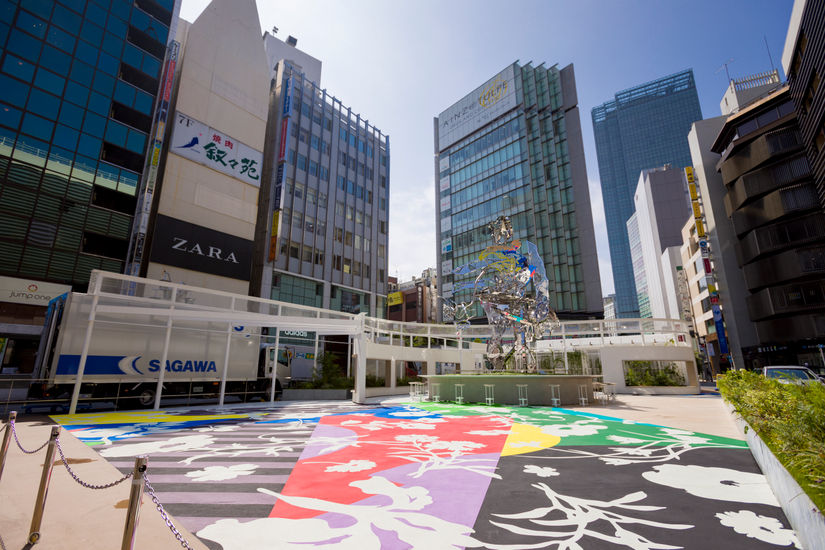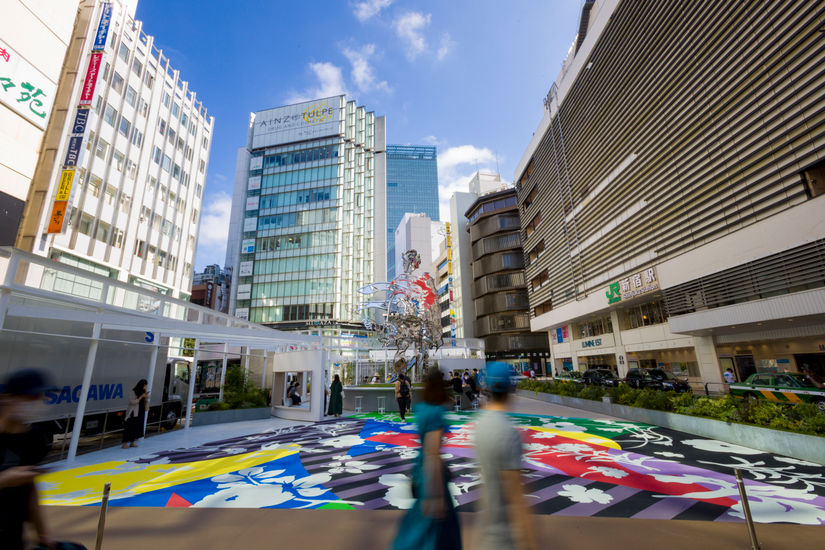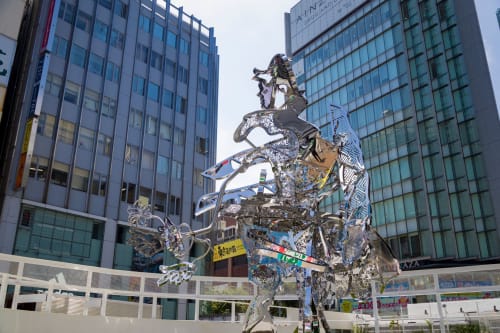Earlier this month, Tomokazu Matsuyama launched an ambitious public art project, Shinjuku East Square, at JR Shinjuku Station in Tokyo - the world's busiest station that seves around 3.5 million passengers every day. Matsuyama's 26-foot tall sculpture ‘Hanao-San’ stands proudly in the center of the community art park, greeting the millions of people daily.
Complemented by the floral land art beneath, the stunning sculpture catches the reflection of its colorful array as well as the constant movement of passers-by. This motif is an ode to the urban history of Shinjuku city, acting as a welcoming gesture of connection, communication, and unity.

Image courtesy of Tomokazu Matsuyama Studio
The Japaenese-born, New York-based artist is known for integrating his cultural heritage and global identity into strategically aesthetic works. Much of Matsuyama’s oeuvre is an introspection of his bicultural background and the impact of globalization. His works adopt artistic conventions from sources as diverse as the Kanō School - one of the most influential Japanese painting styles that flourished in the 15th - 19th centuries - to American pop culture and Abstract Expressionism. Yet, they defy traditional interpretations as he repositions them within a shifting world dialogue, merging imagery of the East and West.

Image courtesy of Tomokazu Matsuyama Studio
The vibrant land art enclosing the sculpture was created with a deep understanding of Japanese heritage, the aesthetics of nature, the four seasons, and ancient Japanese culture; Matsuyama seamlessly blends these elements with his contemporary artistic craft. Testament to his unique artistic language, the flowery graphic patterns inspired by diverse of cultural facets form a visual manifestation of evolving urban life and global exchange. The static land art enmeshed with the moving images reflected on the sculpture, evoke a timeless visual and spatial experience of the world around us. Walkers are encouraged to linger, converse, and meditate before they return to the streets of the cosmopolitan city.

Image courtesy of Tomokazu Matsuyama Studio
Known as the heart of Tokyo, Shinjuku is simultaneously surrounded by department stores, malls, and innumerable cultural offerings, which are illuminated at night by futuristic neon lights. This project is particularly relevant now as Shinjuku East Square exemplifies urban landscape innovation that uses art as an anchor to reshape our contemporary experience, in response to our shared quest for connection.

Image courtesy of Tomokazu Matsuyama Studio
About the Artist
Tomokazu Matsuyama was born in 1976 in Japan and currently lives and works in Brooklyn, New York. He received his MFA in Communications Design from the Pratt Institute. Matsuyama has globally exhibited at various galleries and institutions. His works are in the permanent collection of the Los Angeles County Museum of Art, the Asian Art Museum, the Royal Family of Dubai, and more.
Matsuyama’s work responds to his own cross-cultural experience of growing up between Japan and America by bringing together aspects of both Eastern and Western aesthetic systems. His practice repositions traditional icons within a broader global context to create a distinctive style that resists cultural categorization, emboyding what he refers to as the “struggle of reckoning the familiar local with the familiar global”. By raising questions of national and individual identity through the formal qualities and subject matter of his paintings, Matsuyama examines the “natural chaos” of our social environments and challenges viewers to confront their own conceptions of cultural homogeneity.

